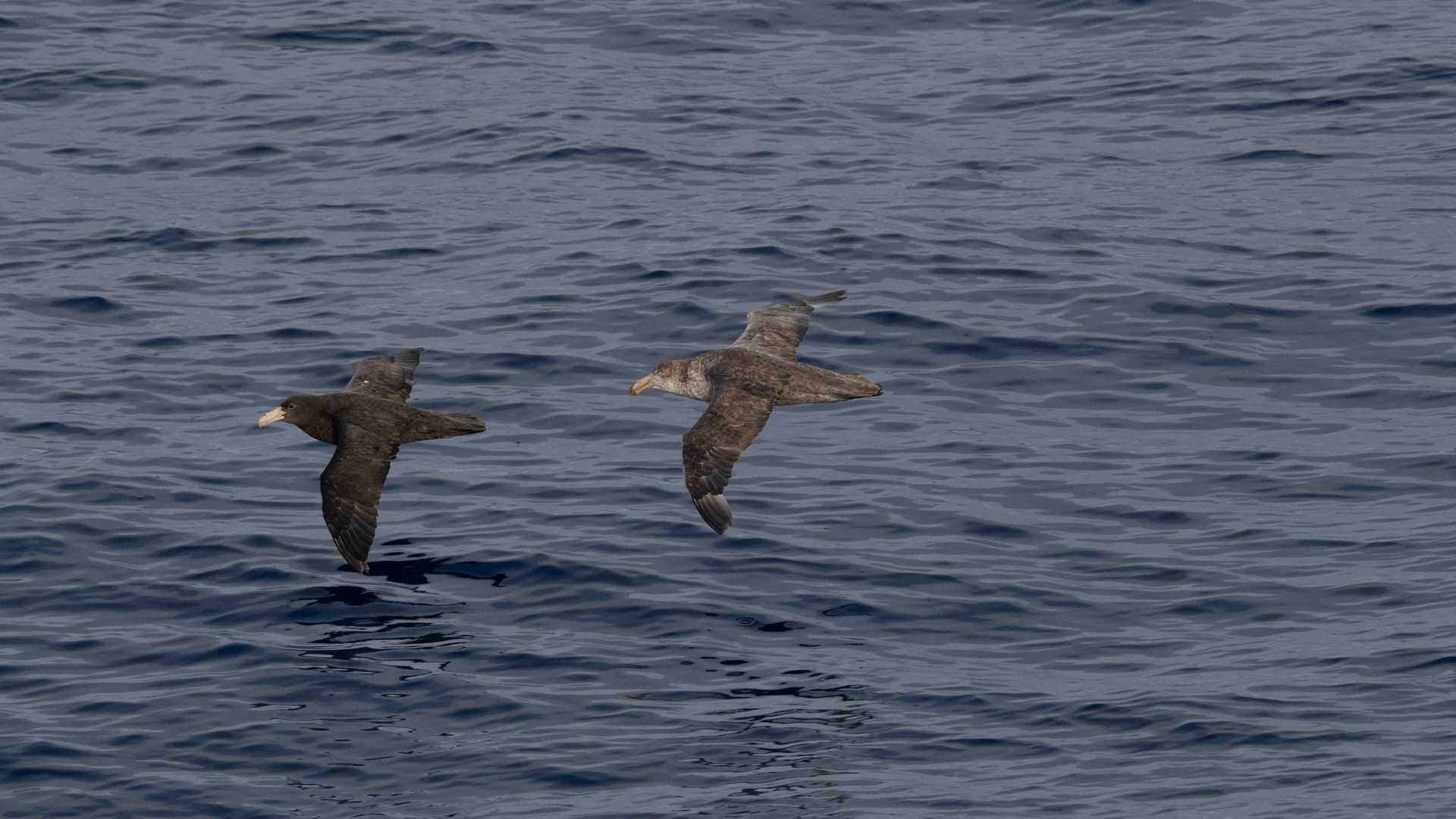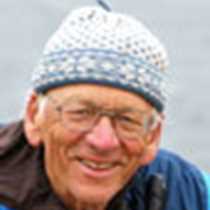Through the night the seas calmed, and the wind let up. Yesterday the Drake Passage was angry, but today it had decided to show us a nicer side. The surface wind had dropped, but there was still swell. Around the ship, a few birds followed in our wake hoping we would stir up some morsel of food. Giant petrels and wandering albatross accompanied us on our route, set to intersect the southern part of the Antarctic Peninsula.
During the morning we heard from our Global Perspectives Guest Speaker, Dr. Ted Scambos. Having worked on research projects in both Antarctica and Greenland, he gave us insight into glaciers and ice sheets of the north and south. Past and ongoing research is showing how the Arctic and Antarctica are changing. Glaciers are melting, ocean water is warming, and ice shelves are eroding from below. Continued trends will cause sea levels to rise and change the landscapes of coastlines around the world.
Later in the morning National Geographic photographer Andy Coleman introduced guests to 15 ways to improve their wildlife photography. Most were anxious to learn how they could capture the events that might unfold over the rest of the voyage.
The weather continued to improve, so by the afternoon the ship was speeding along, and movement was barely noticeable. By lunch new faces appeared: some people who had been affected by the sea conditions on the first day had now gotten used to some of the ship’s motion and the milder conditions were very well-appreciated.
An important part of the afternoon was briefings and procedures preparing everyone for the first activities in Antarctica. We learned about the International Association of Antarctic Tour Operators and their role in managing tourism to minimize impact on the environment. To eliminate the chance of introducing foreign organisms, like seeds, everyone went through a “decontamination” procedure. Vacuum cleaners and scrub brushes were wielded by the staff to clean quest equipment, so no foreign organisms would be taken ashore by accident.
Then the last presentation of the day was given by Eric Guth on glaciology and ice. We learned about the formation of glaciers and how unique Antarctica is with its spectacular landscapes. Following a great question-and-answer period everyone was invited back to the lounge for Captain’s welcome cocktails, where many of the ship’s officers were introduced by the Captain. Looking out the windows, many noticed thick fog, which probably indicated that we were going through the Antarctic Convergence Zone and would soon, biologically, be in Antarctica!







